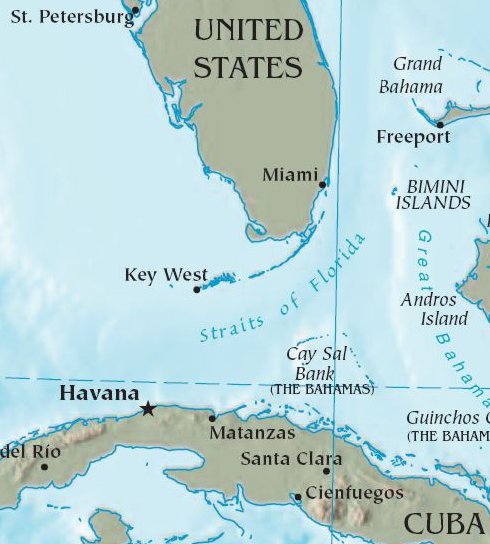 Aircraft Hijacking. The first political hijack in Cuban history was on October 21, 1958, by members of Raúl Castro’s rebel army. Posing as passengers on a Cubana Airlines Viscount, they hijacked a flight from Miami to Varadero. The hijackers were among the 17, of the 20 on board, who were killed when the craft crashed while attempting to land in Oriente province. On January 1, 1959, Batista supporters fleeing the Revolution staged their own hijacking of a Cubana plane to New York. From then on, the United States provided asylum to anyone hijacking a plane from Cuba. They would not be tried or repatriated even if passengers or aircrew were wounded or killed. And the plane would not be returned, as US courts allowed firms to confiscate such aircraft for any outstanding Cuban debts. By July 1961, there had been 12 such cases.
Aircraft Hijacking. The first political hijack in Cuban history was on October 21, 1958, by members of Raúl Castro’s rebel army. Posing as passengers on a Cubana Airlines Viscount, they hijacked a flight from Miami to Varadero. The hijackers were among the 17, of the 20 on board, who were killed when the craft crashed while attempting to land in Oriente province. On January 1, 1959, Batista supporters fleeing the Revolution staged their own hijacking of a Cubana plane to New York. From then on, the United States provided asylum to anyone hijacking a plane from Cuba. They would not be tried or repatriated even if passengers or aircrew were wounded or killed. And the plane would not be returned, as US courts allowed firms to confiscate such aircraft for any outstanding Cuban debts. By July 1961, there had been 12 such cases.
The first instance of an American plane hijacked to Cuba during the Castro period occurred on May 1, 1961, on a flight from Marathon to Key West. The Cuban hijacker listed his name as El pirata Cofrisi! Four more such cases followed and then, on July 24, 1961, Wilfredo Román Oquendo hijacked an Eastern Airlines plane to Cuba with 38 passengers and crew on board. Fidel Castro refused to return the plane (valued at US $3,000,000) but suggested he would exchange it for 24 US-held Cuban ones. The United States refused his offer and in mid-August the plane was returned in exchange for a captured Cuban gunboat. President Kennedy asked Congress to introduce anti-hijacking legislation.
The first criminal hijacking of an American aircraft took place on August 3, 1961. Armed hijackers, one of whom had a 20-year criminal record and was on parole for armed robbery, seized a Continental Boeing 707 flying out of Phoenix, AZ, and demanded it be flown to Cuba. President Kennedy believing they were Cuban agents, ordered the plane to be prevented from leaving after a fuel stop in El Paso, Texas. The Border Patrol fired at the tires, forcing the take-off to be aborted and arrested the hijackers.
Of 159 American aircraft hijacked between May 1, 1961 and December 31, 1972, 85 were flown to Cuba. The hijackers were of four types: political dissidents, criminals, the emotionally disturbed and Cuban agents. Between 1968 and 1971 some 121 planes worldwide were hijacked to the island. In 1968 alone, 13 scheduled American airliners, 5 small planes, and 1 charter were hijacked to Cuba. Colombia had 3 aircraft hijacked there, and Venezuela and Mexico 2 each.
On an attempt to stop the hijackings, the US State Department announced it would allow exiles to return, but Castro refused. International Air Transport Association Director Nut Hammarskjöld went to Havana on January 18, 1969, for talks that resulted in a Cuba-US anti-hijack agreement. Meanwhile, the hijackings continued at an average of one a week between January and March 1969. Then that September Cuba announced that hijackers were no longer welcome and that the Cuban government was willing to discuss extradition. At the Hague Convention of December 16, 1970 a measure calling for the end of hijackings passed by a vote of 74 to nil, with Cuba and Algeria abstaining.
On February 15, 1973, United States Secretary of State William Rogers announced a five-year agreement between Cuba and the United States on plane and boat hijackings. Hijackers would receive severe punishment form the courts. Cuba signed a similar agreement with Mexico in 1973 and with Colombia in 1974. Although plane hijackings since then have become an unusual occurrence, a Cuban airliner was blown up in midair in October 1976.

Thanks to Cuba, Russia is a growing threat to the U.S.
*By Jaime Suchlicki The recent visit to Cuba and the Caribbean by a contingent of Russian naval war vessels and submarines indicates







